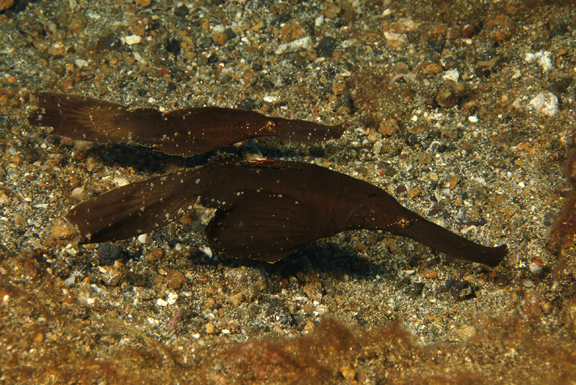It's hard to explain but I find I have to see something before I SEE something. Finding the first of any small or well camouflaged sealife is the hardest. Finding my first scorpionfish was a bear but now I know what to look for. The same for my first seahorse, yellow headed jaw fish and garden eels. You have to learn how to see. And then how to look.
And don't just look down at the reef. Occasionally look up as well and to the sides and even overhead. You never know what might be swimming past you...
And don't just look down at the reef. Occasionally look up as well and to the sides and even overhead. You never know what might be swimming past you...







